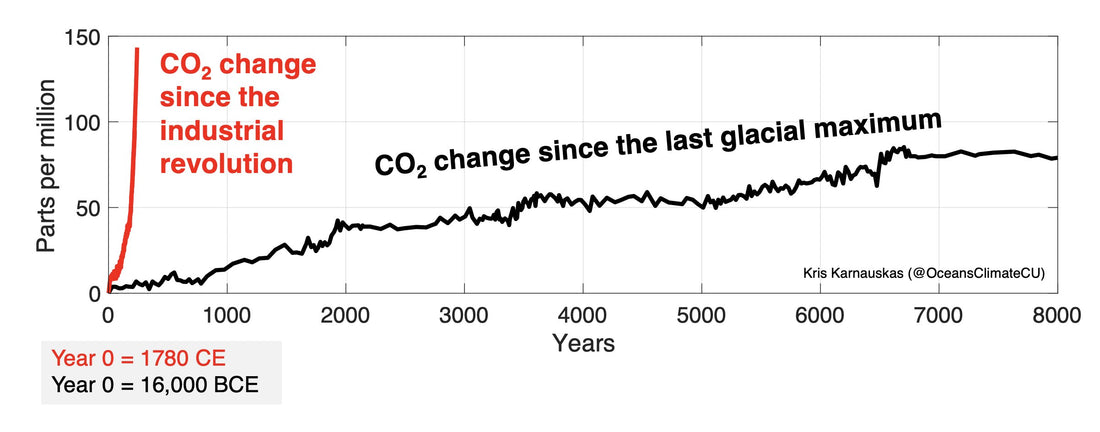
Here's How Statistically Broken Earth's Climate Is
Share
Scientists who research Earth’s deep past have uncovered bounties and bounties and bounties of evidence that the planet’s climate has changed repeatedly and dramatically.
But nothing compares to what's happening today.
The primary lever controlling Earth's temperature is the amount of carbon dioxide in the atmosphere, which has naturally fluctuated over time. Rises and drops in CO2 have mirrored rises and drops in temperature, leading to the advance and retreat of colossal glaciers over the continents. (In recent geological time, an ice sheet covered modern-day Manhattan) For some 11,000 years now, Earth has been in a relatively warmer period, a deglaciated time called an "interglacial." The great glaciers have retreated; human civilization has flourished.
Yet the heating today, largely driven by the burning of carbon-rich fossil fuels, is now accelerating into unprecedented, and deeply problematic, territory. During an interglacial period, CO2 levels rise gradually, often allowing life to adapt. But today, CO2 levels are skyrocketing. The system is out of control. This is depicted in the graph below, created by Kristopher Karnauskas, an associate professor in the Department of Atmospheric and Oceanic Sciences at the University of Colorado Boulder.
"Right now, CO2 levels are rising over 200 times faster than they did during the last deglaciation," Karnauskas said. "That number speaks to the urgency to act soon."

The nearly vertical red line is the carbon dioxide rise (after already naturally rising during the current interglacial period) since the start of the Industrial Revolution. Credit: Kristopher Karnauskas
In other words, what's occurring in Earth's atmosphere today is geologically unprecedented.
Today, fossil fuel giants are mechanically removing ancient, decomposed remains of dead organisms from the ground (oil, gas, and coal), and then these carbon-rich fuels are burned, with emissions going straight into the air. It's a very direct, efficient way to heat a planet.
Without these human activities, carbon dioxide levels in the atmosphere would naturally be below 300 parts per million, or ppm, like they have for at least some 800,000 years, explained Murat Aydin, a research scientist at the University of California, Irvine, who researches atmospheric gases.
But now we're well over 400 ppm, and relentlessly rising. "That's really big," Aydin said. "That's a really big pulse in the atmosphere."

Atmospheric carbon dioxide levels over the last 800,000 years. Credit: NASA
There's no doubt today's CO2 levels are profoundly out of whack. Researchers like Aydin have a firm grasp on the atmosphere's past carbon dioxide concentrations. The strongest evidence lies in ice cores drilled deep from Antarctic ice. Hundreds of thousands of years ago, when precipitation fell on the Antarctic ground, the water froze into ice, which also sealed off pockets of air. Ultimately, thousands of feet of ice amassed atop these bubbles, preserving the ancient atmosphere.
"It's literally a sample of the atmosphere from a long time ago," Aydin said.
Yes, Earth has experienced many bouts of cooler and warmer climes, resulting in glacial and interglacial periods. But skyrocketing CO2 levels have already heated Earth by nearly 1 degrees Celsius since just the late 19th century. More warming is inevitable — though, critically, how much more is a product of how much carbon humanity emits into the atmosphere. There are known, deployable ways to slash vast amounts of carbon emissions, like building ocean wind farms to produce energy.
You’ve come this far…
Why not venture a little further into A.S.S. - our exclusive Australian Space Society.
And keep thrusting Australia into the deep unknown…
#Space_Aus




